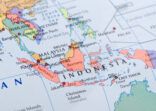While ‘Abenomics’ has in so far only been a partial success, leading to Abe’s approval rating sliding over the past two quarters, the victory has afforded Abe the time he needs to bring the ‘third arrow’ – structural reform – into line with the progress of its monetary policy and fiscal stimulus counterparts.
Ben Williams, manager of GAM’s Japan-only funds, believes that calling the election represented a shrewd move by Abe and paves the way for ‘Abenomics’ to kick into gear as investors gain confidence from a more stable Japanese political outlook.
“Abe has been very clever,” he said. “He has called an election at a time when there opposition is very weak, and despite his approval rating coming down over recent months, he has managed to take a similar majority to last time.
“The LDP can stay in power for another four years. There have been so many Prime Ministers in the last ten years that when one announces an economic policy, investors say: ‘well how long is it going to last?’
“Now Abe has a large mandate from the electorate to continue what he has been doing.”
Genzo Kimura, economist at SuMi TRUST, says that Abe has not only consolidated his governmental position but now has the valuable hand of being able to rule on the consumption tax increase proposed for October 2015.
He explained: “With this election Abe can not only take power from the opposition, but also the ministry of finance and some politicians inside the LDP who had called for another consumption tax hike. It would be difficult for Abe to [retain the popular vote] with another hike.”
The ‘third arrow’ of structural reform is ostensibly the main drag on ‘Abenomics’, but Kimura believes that it is something that requires time to develop – time that Abe now has.
“The first arrow of Abenomics has been successful,” he said. “The third arrow has been very poor so far, but we expect that arrow to grow going forward. Abenomics has been beneficial for some people but for the majority there is little change. However, two years is a very short time to expect change, and from here he has another four years and will be expected to keep delivering towards that outcome.”
Sean Yokota, head of Asia strategy at SEB, offered his outlook on how the process could pan out.
“Structural reforms, which only show progress over the long-run, will be delayed,” he said. “In the meantime, Abe will focus on restarting nuclear power plants to reduce electricity prices for households and corporates.
“On other reforms, Abe has mentioned improving labour market flexibility, addressing declining population and reforming the healthcare sector but progress will likely be slow since they face more opposition and the benefits will be difficult to measure for his next re-election that takes place four years from now.”
There is a widespread vein of thought that the sales tax increase from 5% to 8% in April has been a key component of Japan slipping into recession. While Williams concedes that such measures are beneficial in the short-term, he outlined the importance of a strong economic base in order to maintain sustained long-term growth.
“Where Abenomics perhaps hasn’t yet worked is in the eyes of the consumer, and part of that is the consumption tax hike in April,” Willams said. “That hurt the economy and a lot of it was attributed to Abenomics, but it wasn’t actually an LDP policy.
“The weak yen has been causing higher import prices. I’ve always been taught that a weaker currency is essentially a tax cut for corporates and a tax hike for consumers, which is why there have been weak economic figures since the hike but corporate earnings have hit record figures.
“The positive feel-good factor hasn’t been felt yet. But Abe has delayed the consumption tax hike, which is a net positive for the economy.
“The reason they have delayed the consumption tax is that Abe knows that getting rid of deficit is a strong economy. His absolute focus is to get the economy up rather than short-term efforts like hiking the consumption tax.”
Kimura however is of the view that consumption is an area that will stimulate other aspects of the economy and is something that will be exacerbated by a weaker yen. As well as encouraging foreign investment and Japanese exports, Kimura said that it is also increasing tourism numbers and therefore boosting domestic consumption.
On the investor front, Kimura went on to highlight the robotics industry as an area to watch as Japan’s population demographic undergoes a gradual shift.
“We think there is a hotpot in the machinery sector,” he predicts. “In Japan the population dynamic is falling so we have fewer young people – that will stimulate factories to use automated machinery.”
But, aside from the burgeoning equity market, how else can Abe light a fire under the Japanese economy?
“I would like to see greater efforts from Abe to mend relations with China,” Williams said. “I was speaking to a president of a Japanese bank recently, and he was saying that prior to the disagreement over the Senkaku/Diaoyu Islands that 12% of Chinese imports were from Japan, and have now dropped to 8%. If that figure was still 12% now, that would equate to ¥8.5tn, or 1.7% of Japan’s GDP.”
















